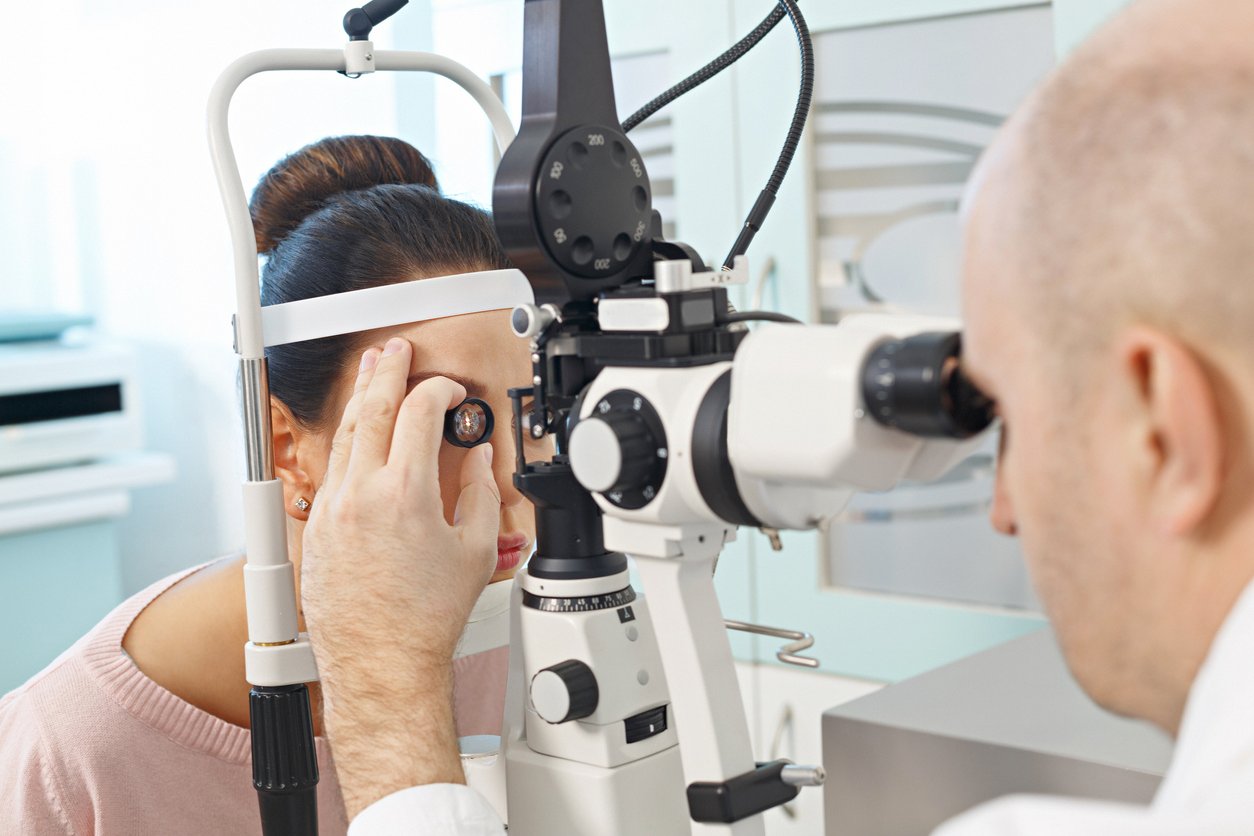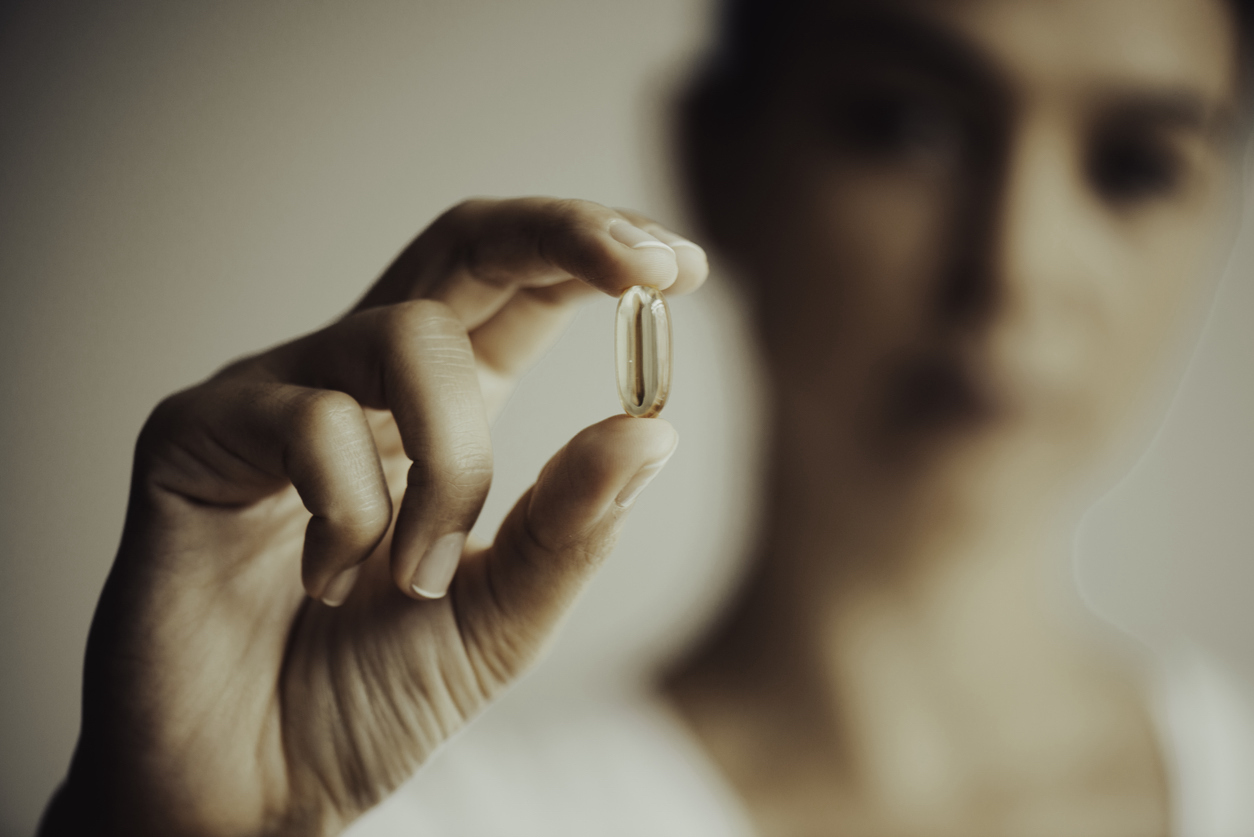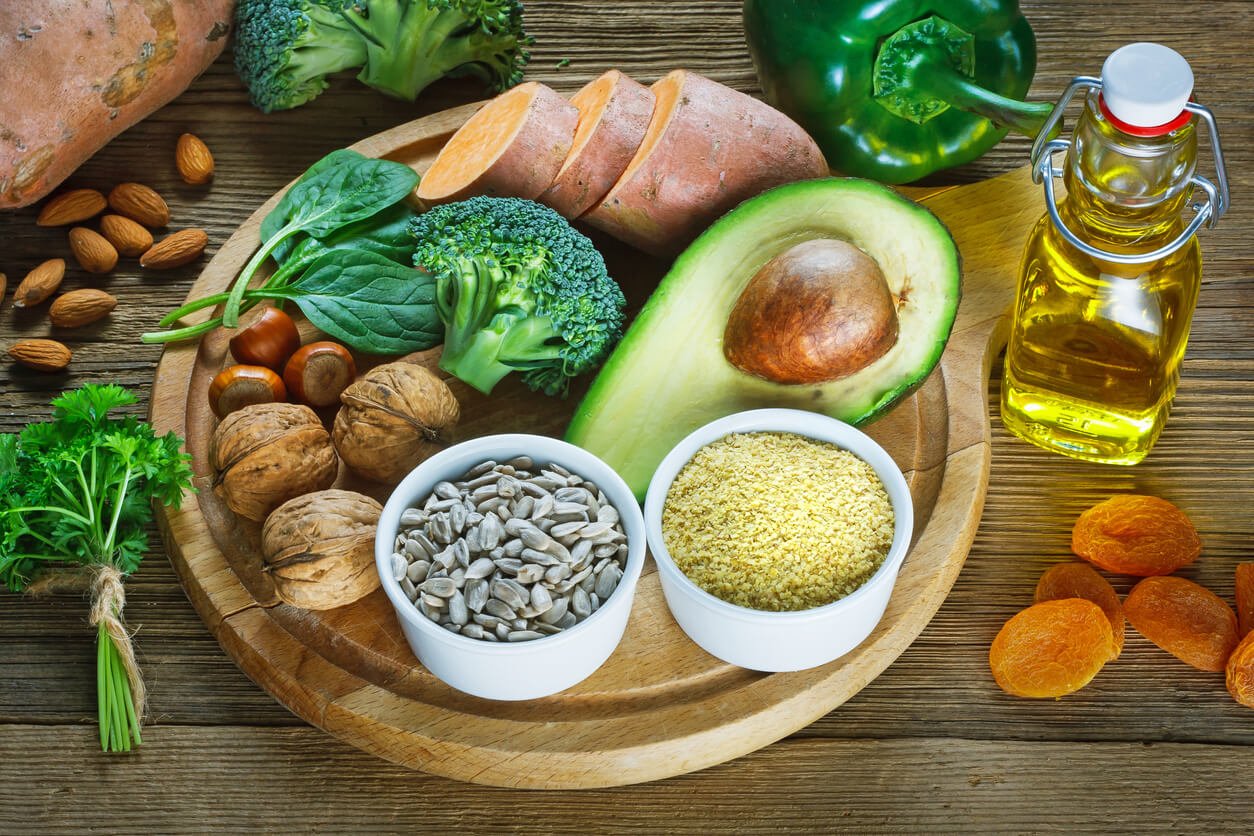Vitamin E is actually a group of eight fat-soluble vitamins; four are tocopherols, and
four are tocotrienols. The most biologically active form of vitamin E, and the one we’ll be covering in this article, is alpha-tocopherol.We also know that vitamin E functions as a potent antioxidant that plays a crucial role in numerous biological processes beyond reproduction, including immune function and the health of your heart, brain, and eyes.
While the discovery of vitamin E (α-tocopherol) occurred in 1922, it wasn’t isolated and assayed chemically until 1935, and not synthesized for another three years. As a fat-soluble chemical, like its vitamin friends A, D, and K, vitamin E gets digested, absorbed, and transported in a manner similar to that of fats. It also accumulates in the fat, muscle, and liver tissue, and so excess vitamin E can be a toxicity risk, unlike the water-soluble B and C vitamins that are excreted much more easily.
Vitamin E Forms
The eight forms of vitamin E include alpha, beta, gamma, and delta tocopherols and alpha, beta, gamma, and delta tocotrienols (isn’t it nice to use Greek letters for good stuff, and not just variants of viruses!). While they work together synergistically, the only form recognized to meet human nutrition requirements is alpha-tocopherol.
That is, it’s the only one that attaches to its own specific protein transporter in the bloodstream, and the only form still found in blood a few days after consumption. Fortunately, our bodies are typically very good at converting the other vitamin E forms into alpha-tocopherol as more is needed.
The concentration of vitamin E in your blood at any given time depends largely on your liver. After you consume foods or supplements that provide vitamin E, whatever you don’t use right away is stored (mostly in the liver) for later use, or excreted. If you need more, your body just does its version of filling out a withdrawal slip, and the liver disburses the alpha-tocopherol (the only form the liver stores) to do whatever task is required. You excrete most of the non-alpha-tocopherol forms, which is why, when you have blood levels of vitamin E checked, the concentrations of alpha-tocopherol are typically higher than other forms.
Benefits of Getting Enough Vitamin E
So given that you are probably not a rat who wants to have babies, what has vitamin E ever done for you? Before I start sharing the long list of benefits, I want to front-load a little bit of a spoiler here: while you can find vitamin E in both foods and supplements, there appear to be differences in the benefits you receive from the two sources. As you’ll see, evidence suggests that it’s better to get your vitamin E from whole food sources whenever possible.
Vitamin E benefits heart health (but apparently not when it comes from supplements)

Vitamin E may help prevent or delay cardiovascular disease, perhaps by preventing oxidation (basically, rusting) of LDL cholesterol, which researchers believe may be a crucial initiating step for atherosclerosis. It may also help prevent the formation of blood clots that could lead to a heart attack.
These lab findings spurred research interest in supplemental vitamin E to combat one of the developed world’s most common killers. And indeed, research has seemed to show that vitamin E could prevent heart disease. A 1993 study of approximately 90,000 nurses found that the incidence of heart disease was 30–40% lower in those with the highest intakes of vitamin E compared with those who got the least.
A study published the following year found that among a group of 5,133 Finnish men and women observed for a mean of 14 years, higher vitamin E intakes from food were associated with decreased mortality from coronary heart disease.
While suggestive, these studies could do no more than point out strong correlation. While the study designs attempted to account for confounding variables like age and smoking status, it’s still likely that people choosing to supplement were different in other ways from those who didn’t.
Researchers wanted a randomized, double-blind, placebo-controlled trial in order to seek more clarity. And since it’s difficult if not impossible to conduct a double-blind study using real food (“Mrs. Filberson, that MIGHT be a vitamin-E rich bowl of steamed pumpkin, but then again, it might be a placebo!”) researchers tend to use supplements.
The HOPE and HOPE-TOO Studies and Vitamin E
Enter the HOPE (Heart Outcomes Prevention Evaluation) study, which followed almost 10,000 patients at high risk of heart attack or stroke for 4.5 years. Researchers found that participants randomized to 400 IU/day of vitamin E (268 mg) experienced no fewer cardiovascular events or hospitalizations for heart failure or chest pain than participants taking a placebo, and actually may have increased their risk of heart failure.
In the follow-up HOPE-TOO study, almost 4,000 of the original participants continued to take vitamin E or a placebo for an additional 2.5 years. HOPE-TOO found that not only did vitamin E supplements provide no significant protection against heart attacks, strokes, unstable angina, or deaths from cardiovascular disease or other causes after seven years of treatment, those taking it were more likely to experience (and require hospitalization for) heart failure.
In other words, the HOPE and HOPE-TOO trials provided compelling evidence that moderately high doses of vitamin E supplements not only do not reduce the risk of serious cardiovascular events among men and women over 50 years of age with established heart disease or diabetes, but may actually make things worse.
Let’s not throw out the food with the supplements, however. Just because vitamin E supplements don’t seem to help with heart health doesn’t mean that vitamin E-rich foods aren’t great for you. And there’s more…
Vitamin E may have anticancer properties

Vitamin E from food may help prevent cancer. As an antioxidant, vitamin E may prevent free radicals in the body from damaging healthy cells, as well as augment the immune system.
Vitamin E from food appears to be protective. The Iowa Women’s Health Study, published in 1993, found that in over 35,000 women there was a correlation between higher vitamin E intake and a lower incidence of colon cancer. And the older the women, the more pronounced the effect.
Supplemental vitamin E, however, doesn’t appear to confer the same, or any benefit. In the 2005 Women’s Health Study, in which healthy women over 45 received either 600 IU of natural vitamin E (402 mg) every other day, or a placebo for 10 years, the supplement did not reduce the risk of developing any form of cancer. In men, daily use of large-dose vitamin E supplements (400 IU of synthetic vitamin E [180 mg]) may increase the risk of prostate cancer.
And a 2002 study followed over 140,000 health professionals for up to 8 years, and correlated their self-reported food-based vitamin E intake (from food frequency questionnaires) with development of colon cancer. It did not show that supplemental vitamin E could lower risk of disease.
Vitamin E and eye health

People who don’t take in much vitamin E from food have a higher risk of developing age-related macular degeneration (AMD), an eye disease that can lead to the loss of our central vision, compared with people who get this nutrient regularly in their diet.
Studies are less conclusive when it comes to supplemental vitamin E and eye health. A couple of studies showed no benefit. On the other hand, the Age-Related Eye Disease Study (AREDS), a large randomized clinical trial, found that participants at high risk of macular degeneration (those with intermediate AMD or advanced AMD in one eye) reduced that risk by 25% by taking a daily supplement containing vitamin E and other antioxidants as well as zinc and copper.
Vitamin E may benefit brain health

A 2002 prospective cohort study of several thousand elderly in a community on the South Side of Chicago found that Vitamin E consumption from foods or supplements was associated with less cognitive decline. The youngest participant was 65, while the oldest was 102.
On the other hand, supplements alone didn’t seem to make a difference in another clinical trial in healthy older women. The 2006 Women’s Health Study randomly assigned almost 40,000 participants to receive a vitamin E supplement or a placebo every other day for up to 4 years. The double-blind, placebo-controlled study found that the supplements provided no apparent cognitive benefits. So once again we’re seeing that vitamin E may bring significant benefit, but for some reason, vitamin E from supplements alone might not.
Vitamin E supports immune function and disease protection

As an antioxidant, vitamin E protects our cells from oxidative damage that can lead to disease. Vitamin E also counteracts the negative effects of a nasty class of chemicals called reactive oxidative species (ROS) that form when fat undergoes oxidation. Through this mechanism, vitamin E may help enhance the immune system and prevent or delay onset of chronic diseases associated with free radicals.
This is important as we make free radicals in response to environmental exposures, including cigarette smoke, air pollution, and UV radiation from the sun.
Supporting this theory, immune cells contain higher concentrations of vitamin E than other cells found in the bloodstream. If you have enough vitamin E in your body, it may help to reduce your risk for infectious disease and respiratory infections, as well as allergic conditions.
Vitamin E for skin care

Dermatologists have been recommending vitamin E for over 50 years. And the beauty industry has been touting the benefits of vitamin E oil and vitamin E capsules for skin and hair care for decades. In the same way that it prevents oxidation in the brain, vitamin E can protect your skin by acting as a free radical scavenger, repairing cells damaged by excessive sun exposure and possibly preventing sunburn.
Personally, I’ve noticed that if I spend too long in the sun and fear a nasty burn coming on, when I break open a vitamin E oil-filled capsule and spread the oil on my parched skin, it seems to reduce my chances of the sunburn worsening. And indeed, vitamin E is a common ingredient in cosmetics and topical cream and lotions. It also has uses in the treatment of yellow nail syndrome, eczema, pressure sores, and psoriasis. So while vitamin E benefits may vary when taken internally, applying vitamin E oil topically can help the largest organ in your body — your skin!
Vitamin E Risks

As with other vitamins, vitamin E can be problematic when taken in supplemental form, rather than from foods. We know what happens if you have too much vitamin E from animal studies showing that high dose alpha-tocopherol supplements can cause hemorrhage and interrupt blood coagulation, as well as lab studies demonstrating that they can also prevent platelet aggregation.
So, how much vitamin E is safe, and is too much vitamin E dangerous?
Two clinical trials have found that taking alpha-tocopherol supplements actually increases the risk of hemorrhagic stroke. One trial included Finnish male smokers who consumed 50 mg a day for an average of six years. Vitamin E consumption didn’t affect overall mortality, but led to more hemorrhagic strokes compared to a control group. The other trial followed roughly 15,000 male physicians in the United States, who consumed 400 IU (360 mg) of synthetic vitamin E every other day for an average of eight years, along with vitamin C. Again, no benefit to supplementation, and a greater risk of stroke.
Vitamin E doses of 1,000 mg are considered the upper tolerable limit. But the bottom line, based on the evidence we’ve seen so far, is that there are few if any cases in which vitamin E supplementation is a good idea. The data makes it clear that getting your vitamin from food is far better.
How Much Vitamin E Do I Need?
OK, let’s buckle in and ride through the confusing turbulence regarding recommended daily amounts of vitamin E.
The first challenge is the shift in measurement. Until January 2021, the measurement of vitamin E was in IUs (International Units) on food packaging labels; now it’s listed in milligrams (mg). If you have any packaged food that’s more than a year old, you should probably toss it. If you want to convert the old measurement system into the new one, here’s how: for natural alpha-tocopherol, multiply the IU by 0.67 to get mg. For example, 40 IU = 26 mg. And for the synthetic version, multiply the IU by 0.9 to convert to mg. For example, 40 IU = 36 mg.
Second, vitamin E from natural sources and synthetic (lab-made) vitamin E have slightly different chemical names, and different potencies. Natural vitamin E is listed as “d-alpha-tocopherol” on food packaging and supplement labels, while synthetic vitamin E goes by “dl-alpha-tocopherol.” (If those look the same to you, don’t worry — they did to me too the first time I read the names. The difference is the addition of a letter “l” for the synthetic version.) It turns out that the natural form is twice as potent as the synthetic.
Third, if you’re trying to figure out how much vitamin E a baby should be receiving, there’s no RDA (recommended daily allowance) for infants because of insufficient evidence. Instead, look for the AI (adequate intake) based on the amount of vitamin E consumed by healthy breastfed babies.
With all those disclaimers and complications out of the way, here’s the US government’s best guess for how much vitamin E folks should be consuming on an average day:
- 0–6 months: 4 mg (AI)
- 7–12 months: 5 mg (AI)
- 1–3 years: 6 mg
- 4–8 years: 7 mg
- 9–13 years: 11 mg
- 14+ years: 15 mg
- Pregnancy: 15 mg
- Lactation: 19 mg
Best Sources of Vitamin E

The conflicting and confusing research we’ve been exploring points to a couple of things we’re pretty sure we know: vitamin E is a crucially important nutrient, and the best place to get it, for most people, is from food sources rather than supplements. So what are these food sources?
The majority of the vitamin E consumed by residents of the US and other industrialized nations is in the form of vegetable fats, as animal products generally don’t contain much. If you want to get your vitamin E along with lots of other beneficial nutrients, then here’s the good news: your alpha-tocopherol is found in many healthy plant foods, including nuts and seeds, dark leafy greens, and some orange and red fruits.
The USDA’s FoodData Central database lists many of the foods that will bless you with vitamin E love if you let them.
Examples of vitamin E-rich foods:
- Wheat germ oil – 20 mg per tablespoon
- Sunflower seeds – 13 mg per ¼ cup
- Almonds – 9 mg per ¼ cup raw whole nuts
- Hazelnuts – 5 mg per ¼ cup raw whole nuts
- Pine nuts – 3 mg per ¼ cup
- Avocado – 2 mg per ½ avocado
- Sweet red bell peppers – 2 mg per medium pepper
- Mango – 3 mg per mango
- Kiwi – 1 mg per kiwi
- Turnip greens – 3 mg per cup cooked greens
- Spinach – 0.5 mg per cup raw leaves
- Broccoli – 0.7 mg per cup






Комментариев нет:
Отправить комментарий